losing weight is a challenge now a days. Here is the best 10 simple steps by which you can lose weight in 1 month by changing your diet and lifestyle habits. However, weight loss is different for everyone. There are a lot of fad diets out there that claim you can lose 10, 20, or 30 pounds in one month, but the truth is you don’t need to follow a crazy diet plan to see results. After all, research shows that most fad diets simply don’t work because people aren’t able to stick with them in the long run and they end up gaining back the weight. But physically, it might not be possible, and the calorie deficit might slow down your metabolism. Read on to learn more!
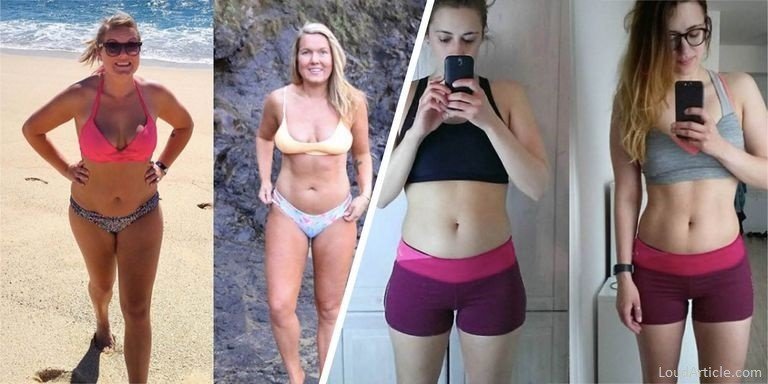
How by 10 simple steps to lose weight in one month
| 1 | Prepare for weight loss |
| 2 | Change your diet |
| 3 | Integrate some exercise and realistic goal |
| 4 | Drink water every hour |
| 5 | Eat slowly |
| 6 | Start counting calories |
| 7 | Add fiber to your diet |
| 8 | Eat a high protein breakfast |
| 9 | Try to practice intermittent fasting |
| 10 . | Get enough sleep every night |
Best simple steps to lose weight in one month
#1 Prepare for lose weight
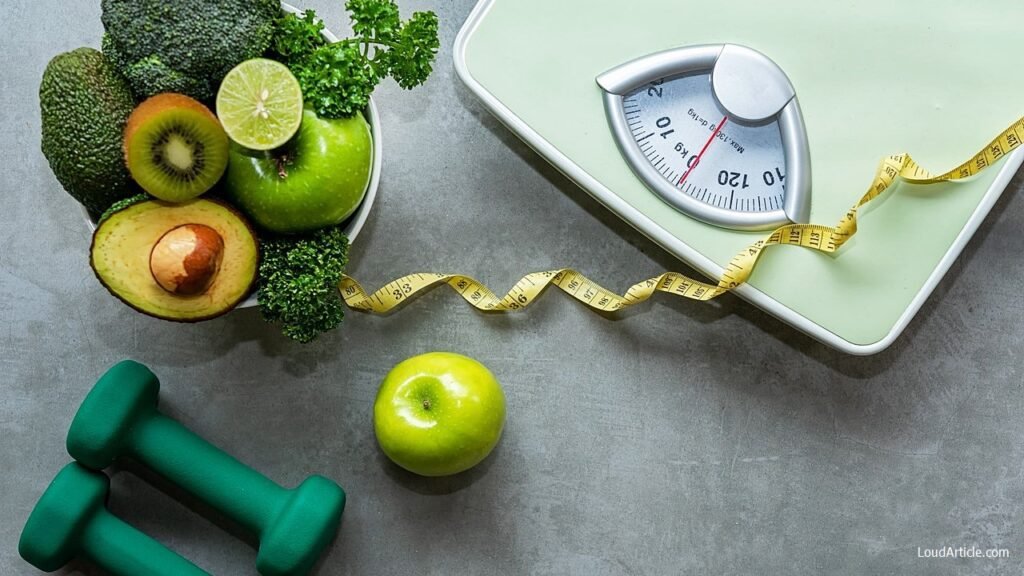
Set a goal
Setting a realistic weight or health goal is a great start to your weight loss plan. It will give you something to track and work towards over the course of a month.
- Think about how much weight you want to lose, what time frame and other health or wellness goals. Set a goal for how much weight and what target weight you’d like to get to within a month.
- A healthy rate is generally considered 1 to 2 pounds a week. So what does this mean? Generally, you can lose up to 4 to 8 pounds in a month. Setting a goal to lose weight more than this amount is generally not realistic.
- You may also want to set goals about exercise or lifestyle factors. For example, you might set a goal of working out three days a week for 30 minutes. This is a great health-based goal but will also support your weight loss.
- Remember, dramatic weight loss is risky and often ineffective; the faster you lose weight, the easier you can gain it back. Only real lifestyle changes can give you effective results. “Fad diets”, such as diet pills or liquid cleanses may help you lose water weight, but most work by essentially starving you
Read: Top 10 places to visit in india

Take your measurements
Taking measurements is the most effective way to track your progress. It also can provide information of whether or not your diet and exercise program are effective.
- Weighing yourself regularly is an easy way to track your progress. Step on the scale one to two times per week and track your weight over time. You will most likely see the most weight loss in the first week or two during your month time frame.
- Since weight alone doesn’t tell you the full story of your weight loss, you might want to consider taking measurements. This can help you see where you’re losing weight.
- Take measurements around your shoulders, bust, waist, hips, thighs and measure them about once every two weeks. Over the course of a month, you should be able to see some noticeable changes.
Read More: Top 10 best laptops in india
Start a journal
A journal is a great tool when losing weight. You can use it to help you prepare for weight loss, motivate you during weight loss and to help keep you on track to maintaining your weight.
- Initially, jot down notes about your weight loss or health goals in your journal. Write about how much weight you want to lose and how you’re going to track your progress.
- You may also take notes on what aspects of your diet or lifestyle you think you want to change. For example, you might want to cut out sodas, increase your activity or eat more fruits and vegetables.
- In addition, you can use your journal to keep a food and exercise diary. Studies have shown that those people who keep track of their food intake and exercise are able to maintain weight loss longer.
Read More: Top 10 best home appliance brands in India
#2 Change your diet to lose weight
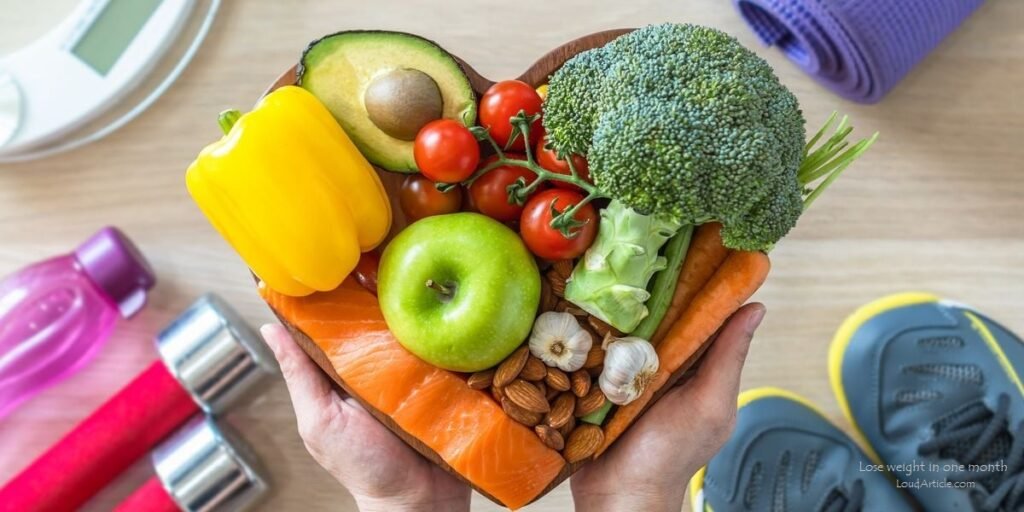
Calculate a calorie limit
In order to lose weight, you’ll need to cut out some calories each day. You can choose to cut out calories from diet alone or combine diet and exercise.
- One pound of fat is about 3500 calories. To lose a pound of fat per week, you need to eat 3500 calories less than you take in each week. Cutting out 500 calories daily will help you lose one to two pounds per week. Following this plan over the course of the month will help you lose that 5 to 8 pounds.
- Use your food journal help you get an idea of how many calories you can cut out from your diet. Subtract 500 calories from a typical day to get a calorie level that will help you lose about one to two pounds per week.
- Do not go below 1200 calories daily. This may result in nutrient deficiencies, loss of lean muscle mass and slower weight loss long-term. If you continuously do not eat an adequate amount of calories over a month, you may notice your weight loss slows or stops.
- The best way to cut calories is to eat nutrient-rich, low-calorie foods combined with regular physical activity.
Read More: Salman Khan

Include more protein, fruit and vegetable
When you’re trying to lose weight and cut calories from your diet during the course of a month, you’ll want to focus on eating low calorie, yet nutrient dense foods. These foods will help you meet lower calorie levels while still consuming adequate nutrition daily.
- Nutrient dense foods are those that are moderately low in calories, but very high in nutrients like protein, fiber, vitamins or minerals. They have high amounts of nutrients for few calories.
- Lean protein is a great example of a nutrient dense food that will aid in weight loss. It helps keep you satisfied longer throughout the day and when you choose leaner cuts, you’ll be choosing lower calorie options.
Read More: Top 10 places to visit in india
Make 50% of your grain choices whole grain
Choosing 100% whole grains is considered a better and more nutritious choice compared to refined grains or white flour. Try to make half of all your grain choices whole grain for the most nutritional benefit.
- Whole grains contain higher amounts of protein, fiber and other essential nutrients. In addition, they are less processed.
- One serving of grains is about 1/2 cup or one ounce. Include two to three servings of grains daily.
- Some studies show that diets that are lower in grains and other carbohydrates result in quicker weight loss compared to low-calorie diets alone. Try limiting your grain choices for faster weight loss.
Read More: Top 10 mobiles in india
Limit snacking
Excess snacking or grazing throughout the day may work against your weight loss and may even cause weight gain – especially if you’re only giving yourself one month plan to lose weight. Be mindful of your snacks and limit them to help you lose weight.
- Some snacks can fit into your weight loss plan. Choose snacks that are 150 calories or less and that are high in protein and fiber. This combination will give you some energy, essential nutrients and keep you feeling satisfied longer.
- Some examples of healthy snacks include: a low-fat cheese stick and a piece of fruit, a small Greek yogurt or a hard boiled egg.
- Try to snack only if you’re feeling physically hungry and it is over an hour or two until your next planned meal or snack.
- If you’re feeling hungry and it’s almost time for a planned meal, wait it out. Try drinking some water or other calorie free beverages to take the edge off your hunger until it’s time to eat.

Read More: Top 10 benefits of morning exercise
Cut out unhealthy foods
It’s fine to indulge once in a while, but to lose weight, you’ll need to limit unhealthy items from your day-to-day diet when you’re trying to lose weight within a month’s time frame. These foods are generally higher in calories and much lower in nutrients. Here are some common culprits to avoid:
- Soda
- Chips and crackers
- Candy and desserts
- White pasta, rice, bread
- Foods high in processed sugar, cane sugar, or high fructose corn syrup
- Energy drinks and sugary/creamy coffees
Drink water
Not only can water keep you feeling full, it can help you manage your hunger and stay hydrated throughout the day.
- Aim for about 64 oz or 8 glasses of water daily at a minimum. Some people may even need up to 13 glasses of water daily to stay adequately hydrated.
- Carry around a water bottle. You may see that with the reminder of a full water bottle, you’ll find yourself drinking much more water simply because it is there.
- There are ways to jazz up your water without adding lots of calories. Try adding citrus slices (lemon, lime, orange), 0-calorie drink mixes, or making decaf or herbal teas.
#3 Integrate some exercise and realistic goal

Include regular aerobic exercise
Cardiovascular exercise is named so because it gets your heart pumping. Aim for 150 minutes (2 hrs and 30 min) of aerobic exercise each week. Over the course of a month, you can make a serious contribution to your weight loss with physical activity.
- You have to make time for exercise. Get creative! Go for a walk before work, or maybe go to the gym right after work. Bike to work, and even start scheduling more physical activities over the weekend.
- Make exercise dates with others. If you make a commitment to someone else, you’re much less likely to break it.
- Try to find an activity you enjoy. Working out is a lot less painful if you can feel like you’re having fun.
- Activities to try include: running, hiking, swimming, dance classes, and at home exercise tapes.

Include a few days of strength training
In addition to cardio and aerobic exercise, try to include one to three days of strength training. This will help you maintain your weight loss after your month of dieting ends.
- Lifting weights or using weight machines helps your body build lean muscle mass. The more muscle mass you have the lower your risk of osteoporosis and the more calories your body burns at rest.
- In addition to lifting weights, yoga and pilates focus on building strength and stamina. These can be challenging at first but grow to be incredibly relaxing while building muscle mass.
Don’t overindulge while you exercise
Just because you’re exercising now doesn’t mean you can eat as much as you want. Try to maintain the same nutritious, weight loss diet while you’re exercising.
- If you must reward yourself or are having a food craving try a lower calorie, more nutritious option. For example, if you’re craving something sweet try going for a yogurt and fruit parfait, or a fruit salad.
- Try to enjoy the endorphin rush that comes after you finish your workout instead of reaching for a snack. For example, you could recline in a chair and focus on how your body feels or take a long relaxing shower.
- Also, increased exercise may make you feel more hungry throughout the day. Ensure you’re eating enough protein throughout the day and are eating regularly. If you need an extra snack, keep it to the 150 calorie maximum.
Increase your total movement throughout the day
In addition to strength training and planned aerobic exercise, another way to increase your total calorie burn and weight loss is by moving more throughout your day.
- Lifestyle activity, or those exercises that are a regular part of your daily routine can help burn additional calories. These are activities that you do daily – walking to and from your car, going up and down the stairs, walking to get the mail or raking the leaves in your yard.
- Many of these activities do not burn a ton of calories alone. However, when combined by the end of the day, they can make a significant contribution to how many calories you’ve burned all day long.
- Increase your daily activities and movement over the course of your month time frame. Try parking farther away, always taking the stairs, going for a short walk break on your lunch hour or doing some light yoga before bed.
#4 Drink water every hour for weight lose

Drinking water is one of the common suggestions we hear for any health issue because we drink lesser water than we are supposed to. Ideally, you must drink three liters per day if you are looking to lose weight quickly.
But you must drink 4 to 5 liters of water if you are workout and break a sweat. You might feel more fatigued and tired if you don’t drink enough water, stopping you from losing those extra pounds by halting the metabolism.
So, keep a count of the number of glasses you consume by setting a reminder on your phone.
#5 Eat slowly to lose weight
According to scientists, you can reduce calorie consumption and reduce hunger by eating slowly, and chewing food helps manage weight, according to scientists.
People with obesity and diabetes use eating slowly as a dietary strategy. It is advised to pay attention to what you eat and chew your food thoroughly not to consume too much food.
#6 Start counting calories
More calories out and fewer calories in the simple mantra you need to follow to lose weight. You can keep track of your weight loss progress by counting the number of calories you are consuming.
To kick-start your weight loss process, you need to reduce 500 calories from your total calorie intake in the first week, ideally. After that, consuming 1200-1500 calories per day is recommended depending upon your daily caloric expenditure.
It is not ideal to have a very low-calorie diet if you work out regularly. Therefore, plan your meal according to the intensity and time of your workout.
In order to lose weight, you need to use more calories than you consume, either by decreasing your calorie intake or by increasing your daily physical activity.
Counting calories can keep you accountable and increase your awareness of how your diet may impact your weight loss.
According to a review of 37 studies in more than 16,000 people, weight loss regimens that incorporated calorie counting resulted in an average of 7.3 pounds (3.3 kg) more weight loss per year than those that didn’t.
However, keep in mind that cutting calories alone is not considered a sustainable strategy for long-term weight loss, so you’ll likely need to pair it with other diet and lifestyle modifications.
#7 Add fiber to your diet for weight lose
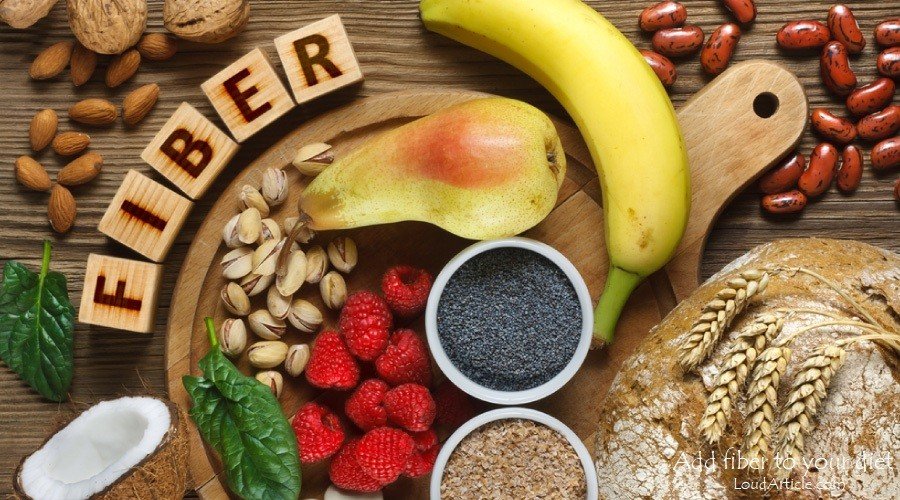
Dietary fiber plays an essential role in maintaining the health of your digestive system. However, it is a good carb that is not easily digestible and absorbance.
Instead, it helps increase the variety of good gut bacteria, helps break down fat to shore-chain fatty acids, and adds bulk to your stool.
In addition, when you consume vegetables, fruits, and whole grains with more dietary fiber, you will increase your satiety by forming a gel-like layer, making you lose weight efficiently.
Fiber is a nutrient that moves through your body undigested, helping to stabilize blood sugar, slow stomach emptying, and keep you feeling full longer.
Multiple studies demonstrate that fiber has a powerful effect on weight loss.
To optimize your health and increase weight loss, aim for at least 25–38 grams of fiber daily from foods like fruits, veggies, legumes, and whole grains.
Therefore, consuming dietary fiber-rich foods can reduce your calorie intake and keep your hunger in check.
#8 Eat a high protein breakfast to lose weight

Starting the day with a healthy high protein breakfast is a great way to stay on track toward your weight loss goals.
Increasing your intake of protein can help you lose weight by reducing your appetite and cutting your calorie consumption.
An older study of 20 adolescent girls found that eating a high protein breakfast increased feelings of fullness and lowered levels of certain hormones that stimulate hunger.
Plus, multiple studies link a higher intake of protein to decreases in body weight and belly fat over time.
Some of the foods that are considered good sources of protein and you can include in your diet are:
- Skinless chicken breast.
- Mackerel, salmon, basa, pomfret, rohu, basa, sardine, haddock.
- Ground turkey.
- Ricotta cheese, cottage cheese.
- Mushroom, tofu, casein water.
- Lentils, soybeans, kidney beans, black beans, garbanzo beans, peas.
- Egg whites, soybean milk.
- Almonds, pistachios, sunflower seeds, flaxseeds, chia seeds.
- Oats, yogurt, eggs, cottage cheese, and peanut butter are a few staple foods you can enjoy as part of a healthy, high protein breakfast.
#9 Try to practice intermittent fasting
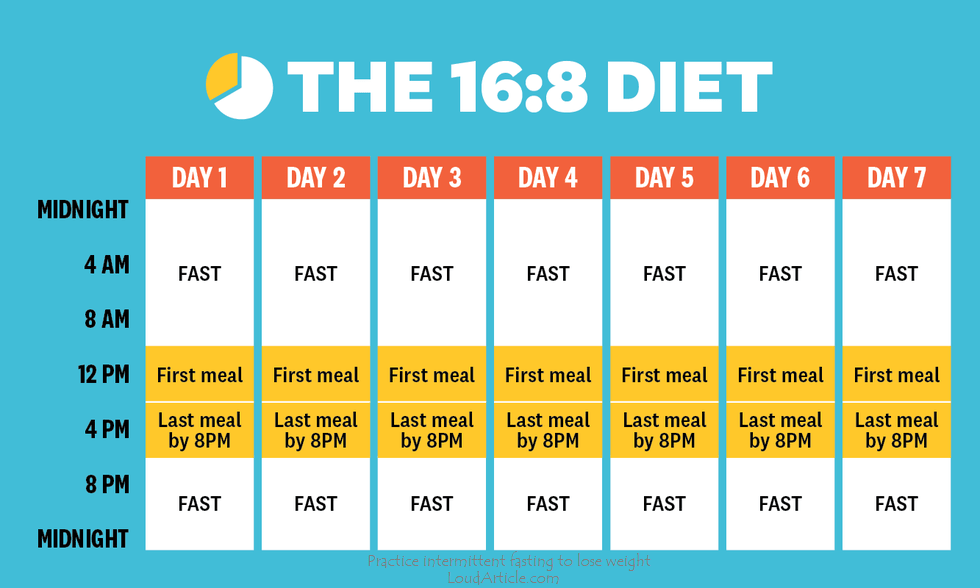
Intermittent fasting involves cycling between periods of eating and fasting, with fasts typically lasting 16–24 hours.
It can reduce the amount you eat by limiting the time frame in which food is consumed, possibly enhancing weight loss.
In fact, some research shows that intermittent fasting can be a powerful tool for weight loss and may be as effective as calorie restriction.
There are many different ways to do intermittent fasting. You can find a method that works for you and your schedule.
#10 Get enough sleep every night

Setting a regular sleep schedule and sticking to it may be another important factor for successful weight loss, especially if you’re trying to lose 10 pounds in a month.
In a small 2008 study, depriving nine men of sleep for a single night resulted in significant increases in hunger and levels of ghrelin, the hormone that stimulates appetite.
Do your best to get at least 7–8 hours of sleep per night, set a regular sleep schedule, and minimize distractions before bed to optimize your sleep cycle and reach your weight loss goals.
Conclusion
Weight loss is something that many people strive towards but ultimately give up on. There are a few reasons for this: Unrealistic goals and sudden lifestyle changes can be tough to stick to.
But there are ways to lose weight healthily without making the process tedious. For example, you can eat nutritious and filling meals instead of skipping meals.
And if you find routine exercises boring, you can opt for enjoyable physical activities with similar weight loss results.
Also Read: Top 10 best home appliance brands in India
If you follow simple tips related to diet, exercise, and lifestyle habits, you can reach realistic goals in one month.
While losing 10 pounds in a month may seem like a lofty goal, it’s entirely possible by making some small modifications to your diet and lifestyle.
Taking it one step at a time and making a few small changes each week can help you lose weight safely and keep it off long-term.
With a little patience and hard work, you can reach your weight loss goals and improve your overall health in the process.
In addition, these tips can help you improve your mental health and reduce your weight in the long term if you follow them consistently.
Read More: Top 10 best laptops in india

